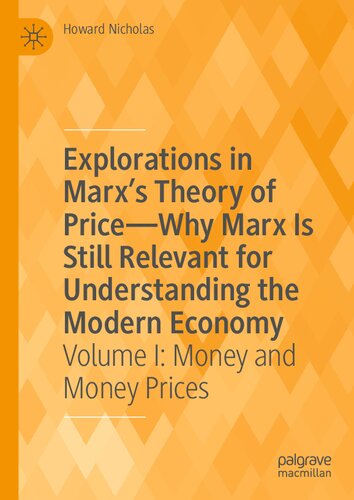

Most ebook files are in PDF format, so you can easily read them using various software such as Foxit Reader or directly on the Google Chrome browser.
Some ebook files are released by publishers in other formats such as .awz, .mobi, .epub, .fb2, etc. You may need to install specific software to read these formats on mobile/PC, such as Calibre.
Please read the tutorial at this link: https://ebookbell.com/faq
We offer FREE conversion to the popular formats you request; however, this may take some time. Therefore, right after payment, please email us, and we will try to provide the service as quickly as possible.
For some exceptional file formats or broken links (if any), please refrain from opening any disputes. Instead, email us first, and we will try to assist within a maximum of 6 hours.
EbookBell Team

0.0
0 reviewsThis book is the first volume in a three-volume series that takes an in-depth look at the relevance of Marx's economics for understanding the modern economy. The focus of this volume is the money prices of commodities.
In light of the failure of central banks to stimulate inflation through printing of money, it is now accepted that there are problems with the mainstream approach to the explanation of prices. Howard Nicholas underlines the shortcomings of this and other approaches to the explanation of prices, particularly their concepts of the value of the commodity and money. He argues the problems with all other approaches are manifest in their inability to explain the changes in the relative prices of commodities, taking place in the context of changes in the aggregate money price level as well as independently. He contends that of paramount importance in Marx’s explanation is that prices are set by producers prior to putting their commodities into the process of circulation, undermining the notion they are determined by the supply of and demand for the commodities in the process of exchange.
Marx’s approach to the explanation of prices is also contrasted with those of Neoclassicals, Post-Keynesians and Sraffa, with a view to highlighting the shortcomings in these approaches as bases for their understanding and explanations of money and prices.
This book will be of interest to academics and students of price theory, money and finance, political economy, and the history of economic thought.